The Artist's Garden: American Impressionism and the Garden Movement, 1887–1920
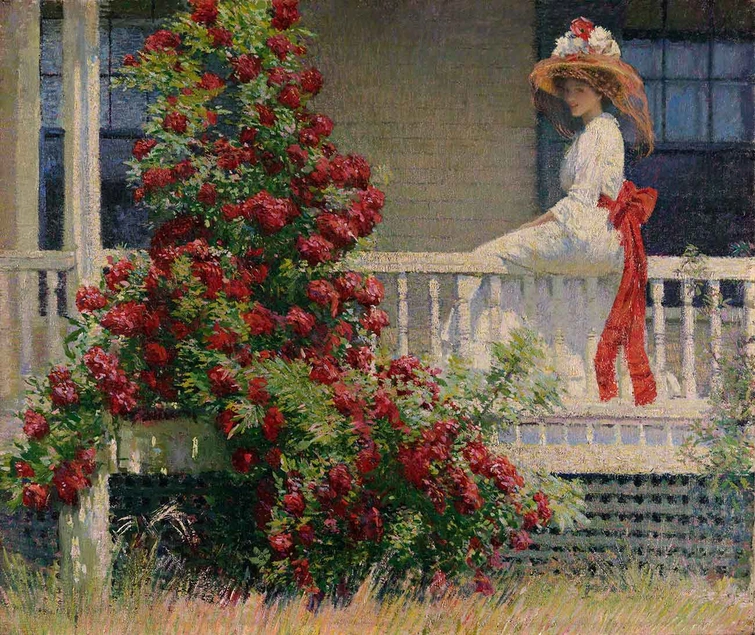
Philip Leslie Hale (1865-1931), The Crimson Rambler, ca. 1908, oil on canvas, 25 1/4 x 30 3/16 in. Pennsylvania Academy of the Fine Arts, Philadelphia, Joseph E. Temple Fund.
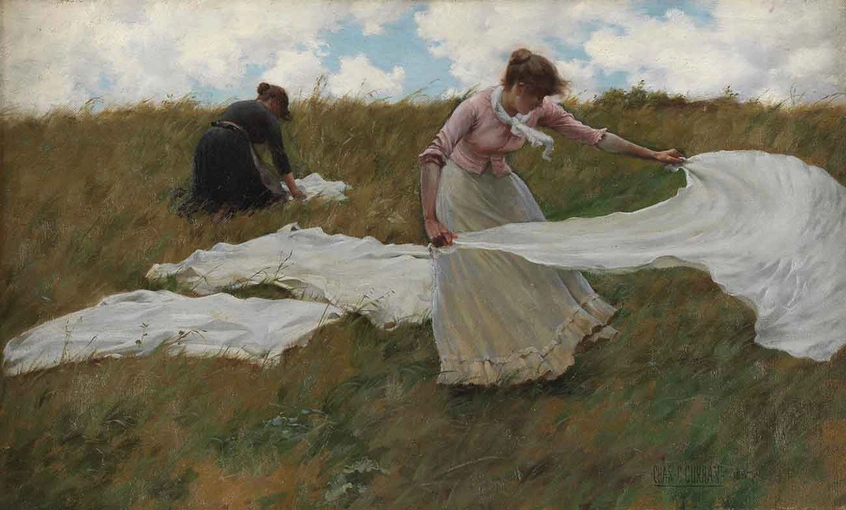
Charles Courtney Curran (1861-1942), A Breezy Day, 1887, oil on canvas, 11 15/16 x 20 in. Pennsylvania Academy of the Fine Arts, Philadelphia, Henry D. Gilpin Fund.
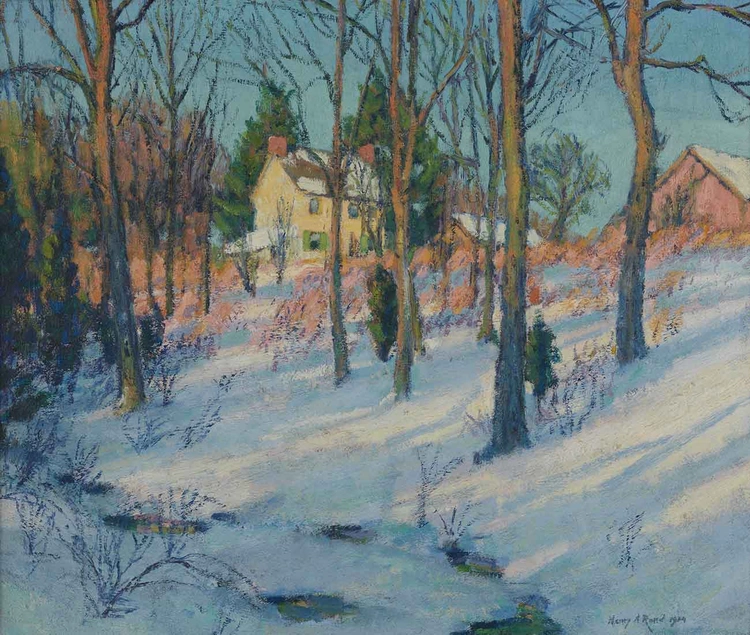
Henry Asbury Rand (1886-1961), Snow Shadows, 1914, oil on canvas. Pennsylvania Academy of the Fine Arts, Philadelphia, John Lambert Fund.
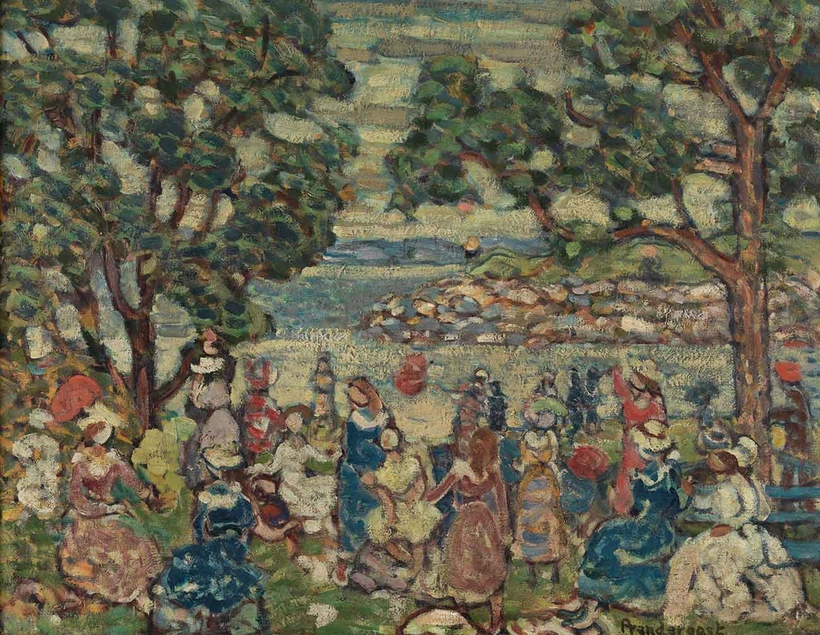
Maurice B. Prendergast (1859-1924), Promenade, ca. 1915-18, oil on canvas. Pennsylvania Academy of the Fine Arts, Philadelphia, The Vivian O. and Meyer P. Potamkin Collection, bequest of Vivian O. Potamkin.

Daniel Garber (1880-1958), Saint James's Park, London, 1905, oil on canvas, 15 1/2 x 11 15/16 in. Pennsylvania Academy of the Fine Arts, Philadelphia, gift of Vera White.
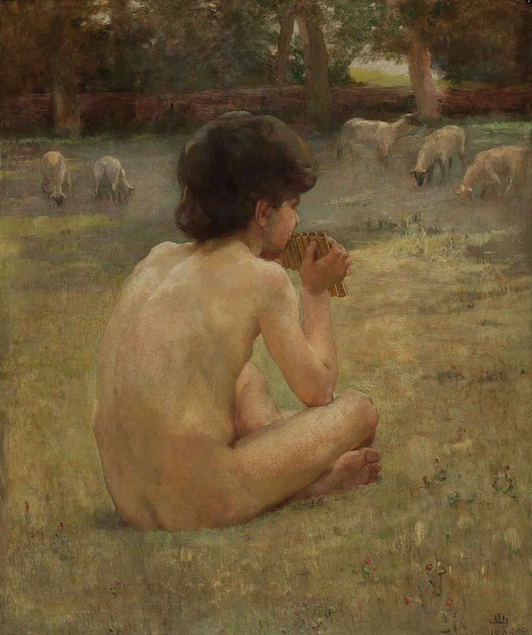
Anna Lea Merritt (1844-1930), Piping Shepherd, 1896, oil on wood, 26 1/8 x 21 5/8 in. Pennsylvania Academy of the Fine Arts, Henry D. Gilpin Fund.
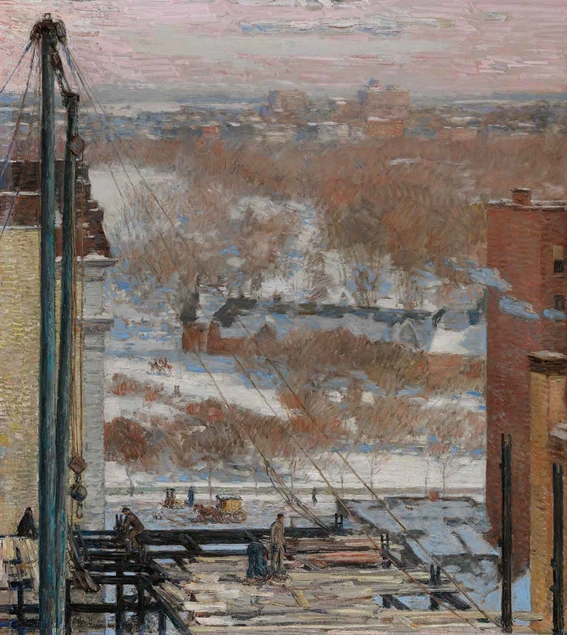
Childe Hassam (1859-1935), The Hovel and the Skyscraper, 1904, oil on canvas, 34 3/4 x 31 in. Pennsylvania Academy of the Fine Arts, Philadelphia, The Vivian O. and Meyer P. Potamkin Collection, bequest of Vivian O. Potamkin.
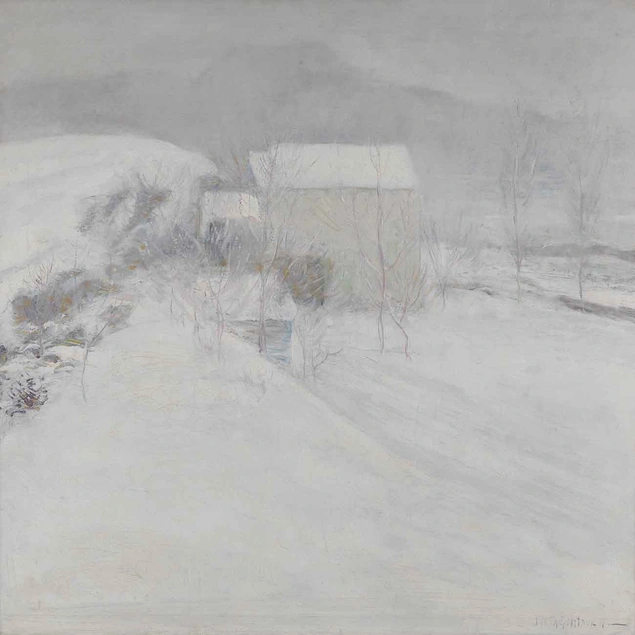
John Henry Twachtman (1853-1902), Snow, ca. 1895-96, oil on canvas, 30 x 30 in. Pennsylvania Academy of the Fine Arts, Philadelphia, The Vivian O. and Meyer P. Potamkin Collection, bequest of Vivian O. Potamkin.








During the only West Coast stop on a national tour, The Huntington’s presentation of “The Artist’s Garden: American Impressionism and the Garden Movement, 1887–1920” showcases a hand-picked selection of 17 paintings from the exhibition that originated at the Pennsylvania Academy of the Fine Arts. Featured artists include Philip Leslie Hale (1865–1931), Childe Hassam (1859–1935), and John Henry Twachtman (1853–1902). A richly illustrated catalog complements the exhibition.
“The Artist’s Garden” explores the connections between the American Impressionist movement and the emergence of gardening as a middle-class leisure pursuit. It’s a theme ideally suited to The Huntington, where the historic botanical gardens established by Henry and Arabella Huntington surround the art galleries that house the collections.
“This exhibition gets behind the undeniable beauty of impressionistic pictures of gardens and asks questions about the social activity of gardening, the scientific hybridization of plants, and even early environmental conservation,” said James Glisson, the Bradford and Christine Mishler Assistant Curator of American Art at The Huntington, who is organizing the exhibition’s presentation at The Huntington and who contributed an essay to the catalog.
During the late 19th and early 20th centuries, Impressionist artists who had studied en plein air (outdoors, often in the countryside) in France were bringing home lessons to apply in an American context. Paintings in “the Artist’s Garden” show domesticated landscapes set in the suburbs, or even in the middle of the city. Unlike the notion of Manifest Destiny that pervaded the paintings of American landscape artists such as Albert Bierstadt (1830-1902), these are domestic pictures about yards, parks, and gardens, often with urban backdrops rather than imposing mountains.
At this time, industrialization had made its mark on the landscape; it also had made its mark on the garden movement. People had more free time for gardening in new suburban backyards, and railroads allowed for day trips to the countryside—giving city dwellers a taste of nature. Scientific innovation was being applied to plants, creating hybrid varieties optimized for color or hardiness. The late 19th century saw an explosion of garden hobbyists who sought out seeds, tools, and fertilizer from horticultural suppliers. These suppliers used new hybridizing techniques to create ever larger and brighter flowers and bigger and more colorful fruits and vegetables.
The Crimson Rambler by Philip Leslie Hale (1865-1931) shows a simple summer scene with a woman next to a cascade of roses. While completely bucolic and unthreatening, the painting is informed by modern life. It features a recently hybridized rose variety that had been developed using scientific techniques. Wildly popular, the ‘Crimson Rambler’ rose was widely advertised in garden supply catalogs. Much like the fashionable dress and hat worn by the woman in the painting, this was an absolutely contemporary and sophisticated flower.
“Painters at the time depicted what was near and family to them, which also happened to be really modern at the time,” said Glisson. For example, Snow, by John Henry Twachtman (1853-1902), shows the artist’s backyard covered in snow. Tawachtman, a member of the new suburban class, lived in southern Connecticut close to the railroad so he could commute into New York City whenever he needed. Though not a farmer, he lavished care on his suburban garden.
The exhibition is organized by the Pennsylvania Academy of the Fine Arts, with leading support from the Mr. & Mrs. Raymond J. Horowitz Foundation for the Arts, Inc. and the Richard C. von Hess Foundation.
The major exhibition sponsors are Bill and Laura Buck, and Christie’s. Additional support is provided by Bowman Properties, Ltd.; the Burpee Foundation; Edward and Wendy Harvey; Mr. and Mrs. Washburn S. Oberwager; Pennsylvania Trust; Alan P. Slack; Martin Stogniew, in memory if Judy Stogniew, a lover of art and gardening; the Victory Foundation; Ken Woodcock; and the Wyeth Foundation for American Art.
The exhibition’s presentation at The Huntington is made possible by the George and Marcia Good Family Foundation in memory of art collector and patron of the arts George C. Good.
Additional support was provided by the Hon. and Mrs. R. Carlton Seaver, the Ahmanson Foundation Exhibition and Education Endowment, and the Susan and Stephen Chandler Exhibition Endowment.